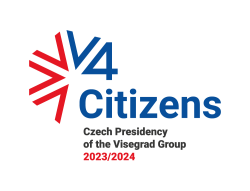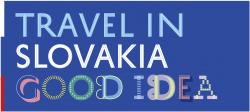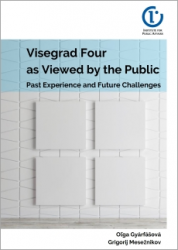Silvia Pcolinska
CHAPTER I: INTRODUCTION
1.1 Central Europe Between the East and the West
Central Europe—as the title suggests—has enjoyed a rather complicated position within the European continent in terms of geopolitics as well as identity. What is today regarded as Central Europe has indeed served as a fluid and flexible concept, giving way to a variety of discussions regarding the geographic, geopolitical and cultural implications of this region. The terms ‘Central Europe’ as well as ‘Mitteleuropa’ have been conveniently applied to demarcate the area between the ‘east’ and the ‘west’, but its imagined borders have been a rather troubling concept to tackle and continue to be subject of debate (Hagen 2003).The historical experience of Central Europeans has indeed been largely influenced by their interaction with their eastern and the western neighbors whose advancements in and out of this region reflected in the consequent fluidity of borders, languages and statehoods present in this area throughout history. The resulting instability negatively affected Central Europe’s status quo as it found itself at the receiving end of east’s and west’s actions. This east-west dichotomy has thus become the principal focus of the recent debates surrounding the characteristics of Central Europe’s societies and governance, and the ever-changing character of this concept contributed to the narrative of Central Europe as the ambiguous, unstable and even mysterious part of Europe.[1]
1.2 Common Threads
While it is hard to delineate not only the borders of Central Europe, it is also at times difficult to precisely define the identity that permeates this region due to the fact that various elements of Central European culture have been subject to fluctuation, fragmentation and even elimination. Despite the turbulent nature of this region, several unifying factors have been at play throughout history which have ultimately transformed Central Europe into a perceived entity of its own. These elements of semblance allow us to distinguish this region from other parts of Europe and lend it a distinctive—although at times perhaps arbitrary—collective identity. Let us start with the obvious. Keeping in mind the linguistic origins[2] of Central Europe, many cultural traditions such as food, music, or customs, as well as various societal perceptions and religious beliefs also represent a shared point of departure for many nationalities in this region that have set them apart from their western European counterparts. It is important to note, however, that many of the existing cultural notions and norms are indeed a product of cultural intermingling and exchange not only between Central European countries, but also received from the surrounding regions and especially from formerly occupying dominant nations. Furthermore, the predominant religion—mainly Roman Catholicism—has set Central Europe apart from both east and west and continues to influence the social sphere in many of Central European states. These effects are, of course, varied. Nevertheless, religion has had and continues to have an effect not only on the existing societal standards and norms, but also on domestic politics and the way issues are approached and discussed today.[3]
Download full article [.PDF, 309 KB]
Notes:
1. In spite of its geographical proximity, East Germany and everything falling to its east continued to represent the unsteady borderland of the west throughout much of the 20th century. 1 The east-west contrast has also been adopted by many Western states during the years of Nazi domination. For these states, Central Europe was so ideologically distanced from the western ‘bastions of democracy’ that states such as Czechoslovakia gained the status of a "'faraway country' of which very little was known" in the west (Hagen 2003, additional debate in Gyarfasova 2002:14–16).
2. Linguistically speaking, Central Europe houses a large majority of inhabitants of Slavic origin, whose languages—save those of Romania, Hungary and Moldova—bear many similarities to one another and thus serve as a reminder of a common etymological background and development (Halecki 1944: 2).
3. Interestingly enough religious traditions, as scholars argue, have enforced in Western Europe the notions of Protestantism and the subsequent development of democracy (Burgess 1997:79–80; Le Rider 2008:156).








